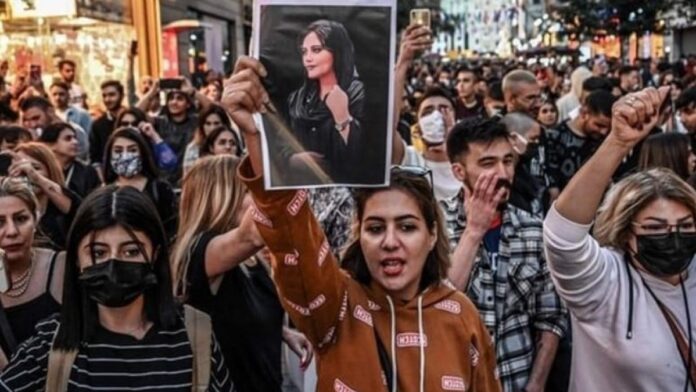The tragic death of Mehsa Amini, an Iranian girl on September 17, 2022 sparked nationwide protests in Iran. Similar to previous incidents that have sparked popular protests, including in 2020 after Iran shot down a Ukrainian airliner, the authorities initially rejected responsibility for triggering this crisis. Instead, the state’s propaganda machine launched a massive disinformation campaign and blamed Mehsa’s underlying medical condition for her death.
But when the protests refused to lower the protest temperature, the Islamic Republic resorted to its classic approach of “maximum pressure”, using all means of authority and imprisonment to stop the rallies. Discontent has been growing in the Islamic Republic for at least a decade. But a year into Ibrahim Raisi’s presidency, his government, which represents the most conservative elements of the 1979 revolution, has pushed through a controversial set of social policies that have helped fuel the latest round of protests, that is, amid Iran’s ongoing international isolation. Despite the failure of the regime’s economic policies as well as its uncompromising stance on the nuclear negotiations, the government accelerated the implementation of a social engineering plan that included a “National Internet,” “Rehabilitation,” and second, “Hijab” became top priorities. These ideas have long been debated among Iran’s hardliners and conservatives, the Centre for the Islamic Iranian Model of Progress and the Office of Supreme Leader.
Anti-Hijab protests in Iran have already been successful. The Islamic hijab rule has been enforced in Iran since the Islamic Revolution in 1979. According to the law, women and girls over the age of nine must cover their heads in public. However, their intensity varies from administration to administration, depending on the political background of the incumbent president. Backed by the country’s ultra-conservative religious elite, Iranian President Ebrahim Raisi called the recent backlash against the hijab law “a systematic encouragement of moral corruption in Islamic society.” Similarly, earlier this month the deputy prosecutor of Mashhad in northeastern Iran wrote a decree banning women without headscarves from entering offices and banks or using the subway. While the mayor initially opposed the decision, he eventually allowed the order.
Consequently, women’s rights and civil rights activists called on citizens, including men, to resist the compulsory wearing of the headscarf. The call received a positive response on the morning of July 12, and many videos and photos were posted on the electronic and print media. The New York-based International Campaign for Human Rights in Iran (ICHRI) expressed fears about “possible violence and arrests on July 12.” The anti-hijab social media campaign is being led by Masih Elenjad, a US-based activist who has been behind several online campaigns over the past decade. During the 2017-2019 protests, several protesting women were arrested and many were seriously injured in the police action. Iranian activist Saba Kord Afshari was jailed for 24 years for promoting “corruption and prostitution” by removing her hijab.
The current protest has spread beyond the usual suspects. In addition to women and students, traders and shoppers are also protesting in Tehran’s market. In the past, they already have protested against the deteriorating economic situation and the devaluation of the Iranian currency. But this may be the first time in decades that they have not only protested for their own immediate economic interests but have shown solidarity with the girls and women who were killed by security forces during the 1979 revolution.
Dozens of Iranians have been killed and thousands of members of security forces have violently attacked the demonstrations. Meanwhile, prospects for change within Iran’s leadership will remain limited as long as its members continue to see their current strategy as important to consolidating and securing their power.
The protests transcended common racial lines and brought together groups that are often divided. Last summer, the region’s two ethnic groups, the Bakhtiari Lors and the Arabs, joined forces in protests against polluted water and air in the southwestern province of Khuzestan. However, this was limited to the province.
But what makes these policies so crucial to the current situation is their clear rejection of the values held by the majority of Iranians outside the conservative camp. Instead of acknowledging the divisions in Iranian society, the authorities have emphasized uniting the entire population around a single state ideology and way of life. Social freedoms in Iran have therefore been further restricted since the beginning of Raisi’s presidency. As a result, the Islamic Republic is now facing an unprecedented split between state and society, with the state’s influence over the population rapidly diminishing. Discontent has spread, hope for change is fading, and the Islamic Republic’s support is shrinking.
Street protests are now widespread. in particular, the new Generation Z (researchers and popular media use the mid-to-late 1990s as birth years and the early 2010s as birth years. Most members of Generation Z are children of X) see this as the only viable way to achieve change. Nonetheless, Iran’s security elites continue to tout their traditional techniques as effective in suppression. They follow a simple argument: regardless of the context, whether faced with international condemnation of the nuclear programme or a domestic political crisis, the leaders of the Islamic Republic are more inclined to escalate than to step back and reconsider their policies, which they believe is the maintenance of pressure that will increase the cost to their opponents to the point where it becomes irrational to continue opposing Tehran.
As a result of this persistence in the streets of Iranian cities, dozens of Iranians have been killed and thousands of members of security forces have violently attacked the demonstrations. Meanwhile, prospects for change within Iran’s leadership will remain limited as long as its members continue to see their current strategy as important to consolidating and securing their power.





















